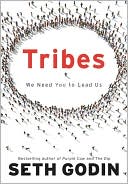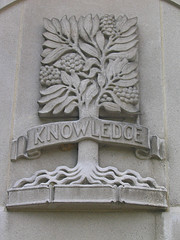 A year ago, our medical society was one of the first associations to privately license Forrester Research’s survey tool to determine the social technographics profile of our membership, physicians in Massachusetts. Review last year’s findings here.
A year ago, our medical society was one of the first associations to privately license Forrester Research’s survey tool to determine the social technographics profile of our membership, physicians in Massachusetts. Review last year’s findings here.
A key takeaway last year was that physicians are definitely part of the social media world. They weren’t leading the pack by any means, but they use social media tools at least as frequently as their peers in their group – and sometimes more often.
Given the explosion of social media tools in the past year, we thought it was already time to refresh the data and invest in another survey using Forrester’s tool. In late June, we sent an e-mail survey to a large cross section of our membership. This year’s sample was much more robust, with nearly 800 members responding, compared to the 522 who answered the same survey a year ago.
Key takeaways
- Our physicians are still strong consumers of social media content, even relative to the general public. “Spectators” account for 74% of our membership, almost exactly equal to the proportion of the US adult population.
- “Creators” are still under-represented among our members, even among our younger physicians. “Creators” are the people who write blogs, upload photos and videos, and so forth. In the general US population, the creating class comes from the young. But only 12% of our members 25 to 34 were “creators,” compared to 19% of US adults in the same age group. A year ago, I speculated that the chief reason was time – the lack of it. I still think that’s true. Our young members age 25 to 34 are medical students and residents, and are among most time-starved of any young professional group. But they do consume the content by the bushel — only 5% of this group is considered “inactive.”
- Physicians’ use of social networks – as a specific social media tool – is growing very, very fast. Thirty-two percent of members were classified as joiners – those who use Facebook, LinkedIn and other social networks. That is just a shade under the US adult population of 35%. Last year, 21% were Joiners. (Learn the definitions of Forrester’s social technographic “ladder” in an online slide show.)
- The percentage of those who visit social networks rose 50%. Among physicians age 45 to 54, 26% visit social networks at least once a month, triple the number from a year ago.
- The number of those who maintain a social network site rose 60% for all members, doubled among physicians 35 to 44 and tripled for those 45 to 54.
Conclusions
A year ago, the case for focusing on social networks rested mostly on our younger members. This year, there’s a critical mass for online networks among every age group, even those over 55. Given Facebook’s growth since last summer, this may not be surprising. But until we did this survey, it wasn’t clear that this applied to our members. Now, we know that it does.
There is still a strong case for developing RSS feeds, tagging, ratings, reviews, blogs, widgets for portals (iGoogle), video and podcasts. It’s no longer a question of whether there are fish in those ponds – we know there are. Now it’s a question of business and marketing strategy – not if we fish there, but where and when.
One final note
I asked Forrester to add one more question – whether our members use Twitter. Four percent of our total sample uses Twitter regularly – about 8% among those age 25 to 34. Forrester didn’t use the answers to calculate social technographic profiles, but it is a good baseline number for the future nonetheless.



 I saw this post on the ASAE’s communications listserv last week:
I saw this post on the ASAE’s communications listserv last week: